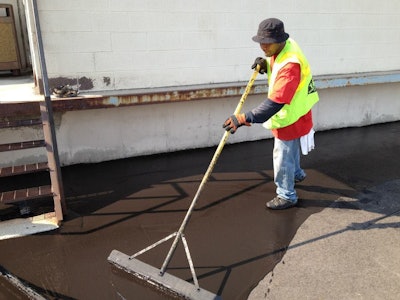
I’m sure many of you have received a compliment or two over the years proclaiming your work as top-notch and that you are an “artist”. I love those compliments, and I genuinely think sometimes we in the asphalt industry pull off miracles with jobs and transform a disaster parking lot into a work of art.
But what happens when your customer isn’t happy, maybe for completely ridiculous reason? Did a leaf fall into the sealer? Did a squeegee drag a small pebble through the sealer? Did you accidentally step on the grass with sealer-covered boots? These and similar scenarios have happened to many of us and lead to my thoughts on this column.
The problem is, we are dealing with a very messy product. Our job is to spread oil and paint around, but make it look good -- make it look like art by most clients’ expectations. Customer service and quality work should always be a priority for all of us, but there are times when those expectations from our clients may be unobtainable.
An example that comes to mind is, after sealing a lot and placing the striping (which is always the icing on the cake), those lines may get mucked up as the fresh sealer fully cures out over the next 30 days.
That’s right. Most sealcoats, although they can dry in hours, take upwards of 30 days to cure out. During that time, the oil moves, and you (and your clients) will see scuff marks, power steering marks, or other imperfections. Also, as we know, the heat makes the situation worse. So, you’ve completed a beautiful job, but maybe the stripes have become not as sharp as they were -- so your client may take issue with your entire project.
Another example might be that little bit of overspray on their grass, or your employee absentmindedly setting a wet squeegee or brush on the lawn. Although most of us consciously try to prevent things like that, they still can happen, thus ruining our perfect work of art.
It has become clear that there is a balance between an “industrial maintenance job” and the “work of art” that some clients -- mostly homeowners -- have come to expect. This balance needs to be communicated to the client – in addition, of course, to taking precautions to prevent potential issues on our end.
How do you Fix This?
We have found that by having a simple conversation with the client before starting the job solves many problems. We explain that we are spreading sealer on their asphalt and that during the curing process, several things can happen that may cause differences in the appearance of the sealer. We created a “What to Expect” sheet that we leave with each client. We talk about curing vs. drying, water stains, power steering burn marks etc. That simple effort at communication, combined with our training and our precautions, has eliminated any issues questioning our “artistic” ability.
In addition to educating the client, we have also taken steps internally to prevent issues, such as using spray shields and tar paper to create crisp, sharp edges. Some contractors doing residential work will use brushes to leave a textured look. We also realize that we are not perfect, and if we make a mistake, we fix it and fix it promptly.
No matter what way you do it, having clear communication with the client on what you are doing, combined with your quality control, should resolve any issues and, hopefully, bring out your inner Picasso!

![Lee Boy Facility 2025 17 Use[16]](https://img.forconstructionpros.com/mindful/acbm/workspaces/default/uploads/2025/09/leeboy-facility-2025-17-use16.AbONDzEzbV.jpg?auto=format%2Ccompress&fit=crop&h=100&q=70&w=100)








![Lee Boy Facility 2025 17 Use[16]](https://img.forconstructionpros.com/mindful/acbm/workspaces/default/uploads/2025/09/leeboy-facility-2025-17-use16.AbONDzEzbV.jpg?ar=16%3A9&auto=format%2Ccompress&fit=crop&h=135&q=70&w=240)









